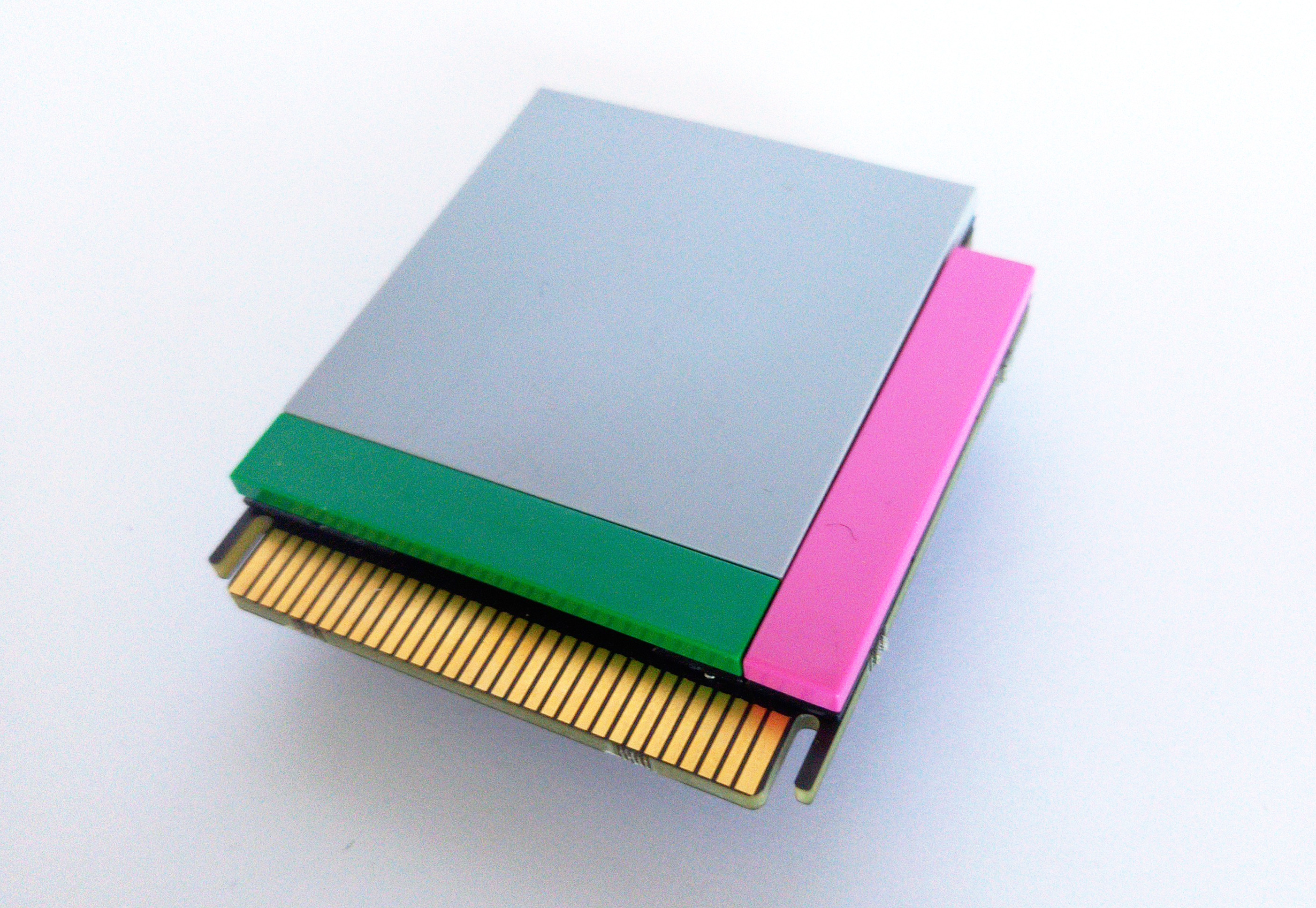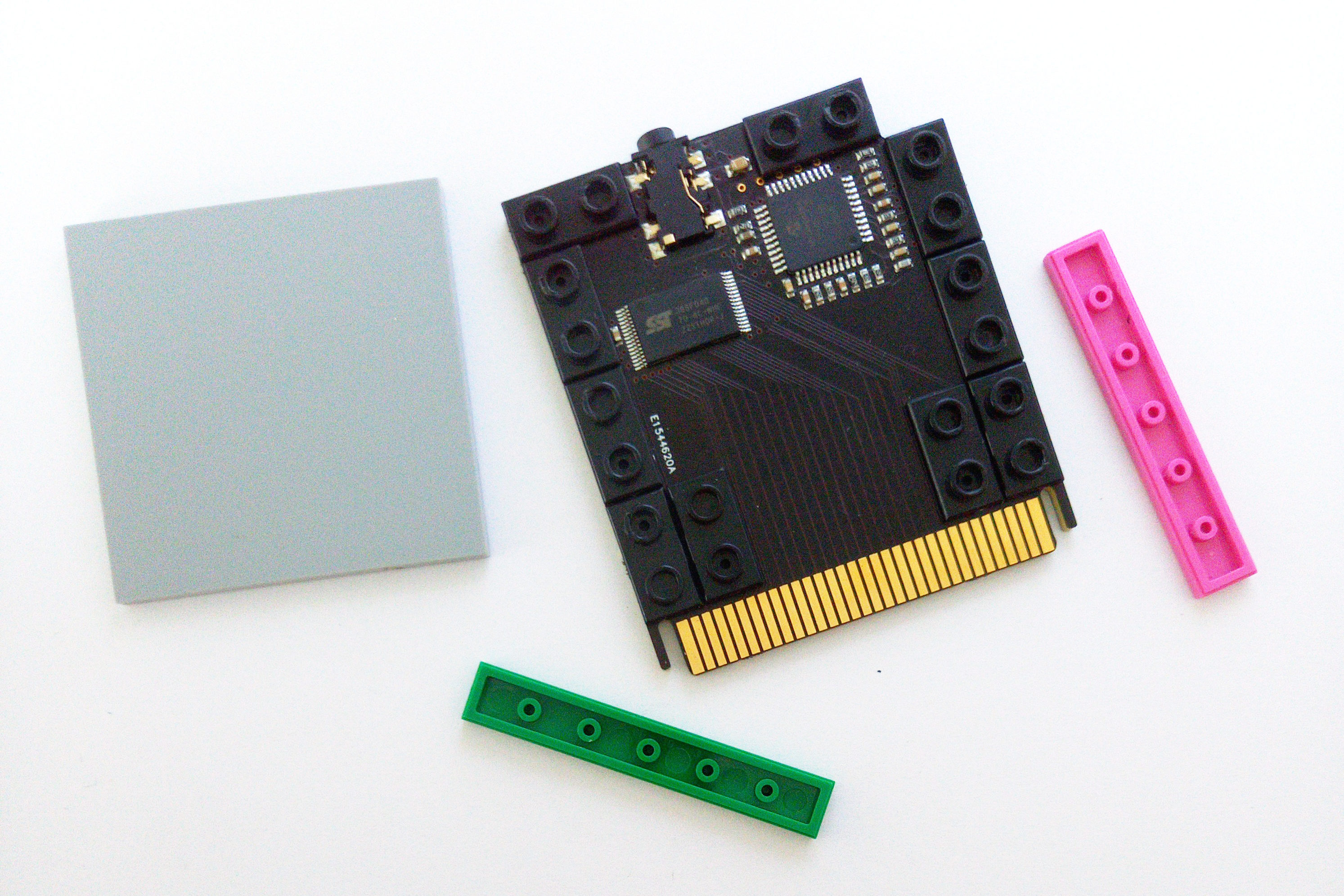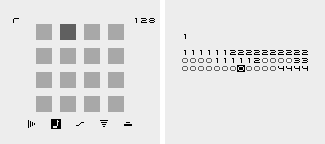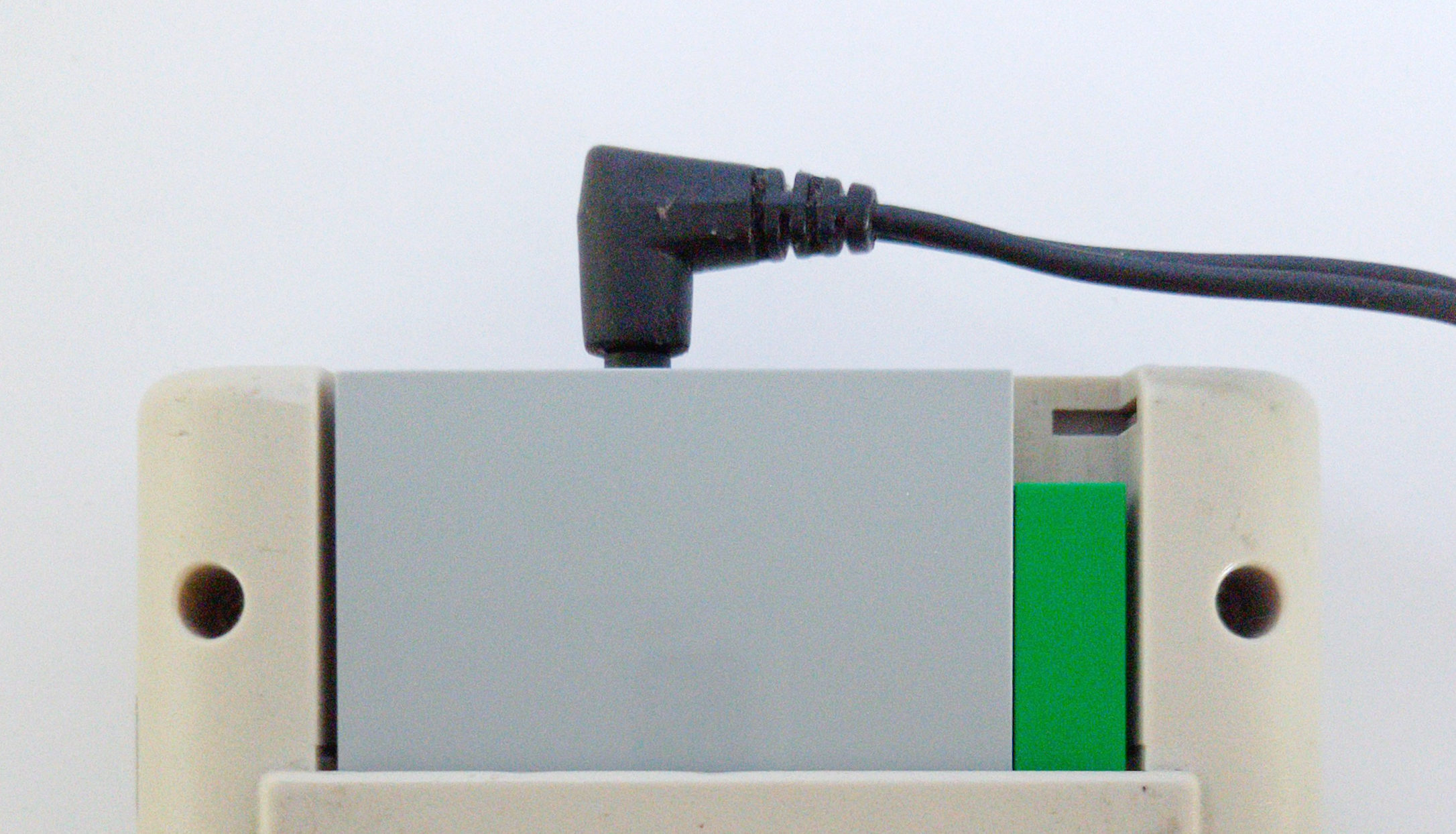Nanoloop mono is an analog synthesizer cart for the original monochrome Game Boy models.
Bass sound example:
Percussion sound example:
nanoloop online shop
3 channels:
-
Dual oscillators
Variable pulse width
Low-pass filter with adjustable resonance
-
Single impulses
Extra-resonant bandpass filter for 808-like drum sounds
-
True analog noise generator or
Dual square waves
Bandpass filter with medium resonance
In the nanoloop mono cart, the analog components (op-amps, comparators, logic cells etc) of a PIC microcontroller are connected and configured in such a way that they form a hybrid soundchip with 3 analog filters and a true random noise generstor, using only a few passive external components.

The cart is covered with standard 8mm grid plastic tiles in random colors that can easily be replaced with compatible parts such as LEGO®, BlueBrixx etc.


Nanoloop mono is a stepsequencer with per-step control for all parameters. There are 8 banks of flash memory each of which can hold 15 patterns per channel and a song structure.
user manual
On the original Game Boy models, one pin of the cartridge connector functions as audio input, connected to the built-in amplifier. This unique feature allows to generate sound on the cart and play it through the headphone output on a completely analog signal path.
Additionally, audio is also available through a mini jack port on the cart. The raw signal is rather strong and there is no volume control, it is hence best used as input for a mixer, active speaker etc.

| Model |
Internal Sound | External Sound |
| DMG (original Game Boy) |
clean and bassy | OK |
| Game Boy Pocket | less bass, hiss |
OK |
| Game Boy Color | thin, distorted |
OK |
| Game Boy Advance / SP | - |
OK |
| DS is not compatible | - |
- |
| Analogue Pocket is not compatible | - |
- |
For use with headphones, only DMG can be recommened.
Nanoloop mono offers the same sync options as nanoloop one.
(c) 1998-2023 Oliver Wittchow
"Game Boy" and "Game Boy Advance" are registered trade marks of Nintendo
Nintendo has not licensed, endorsed or approved of nanoloop.